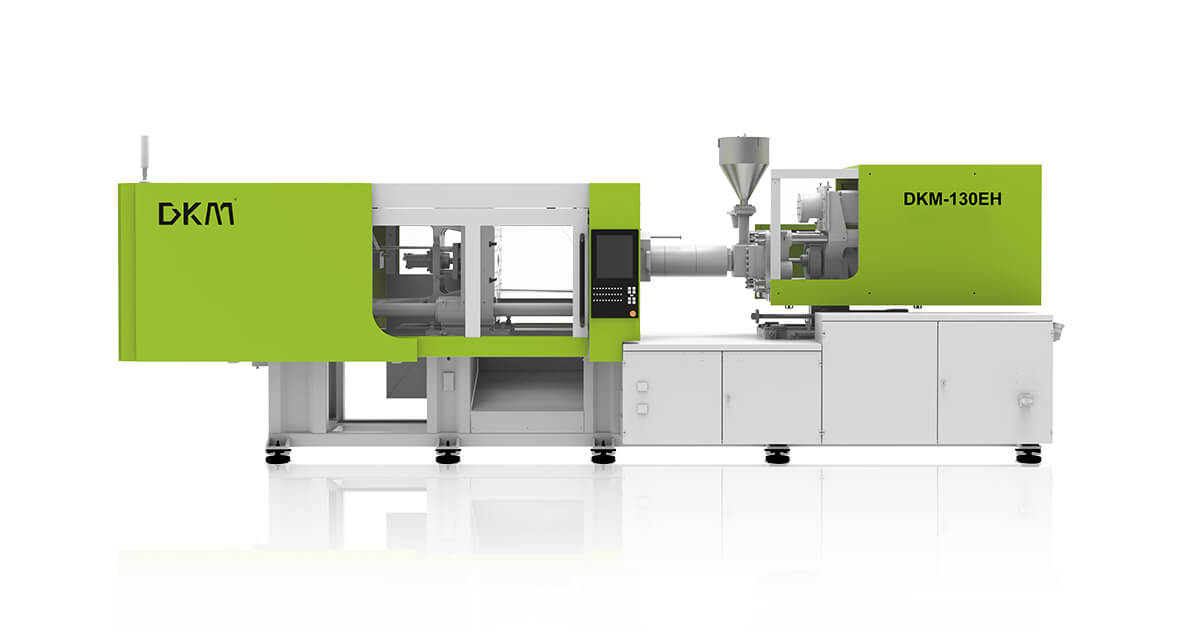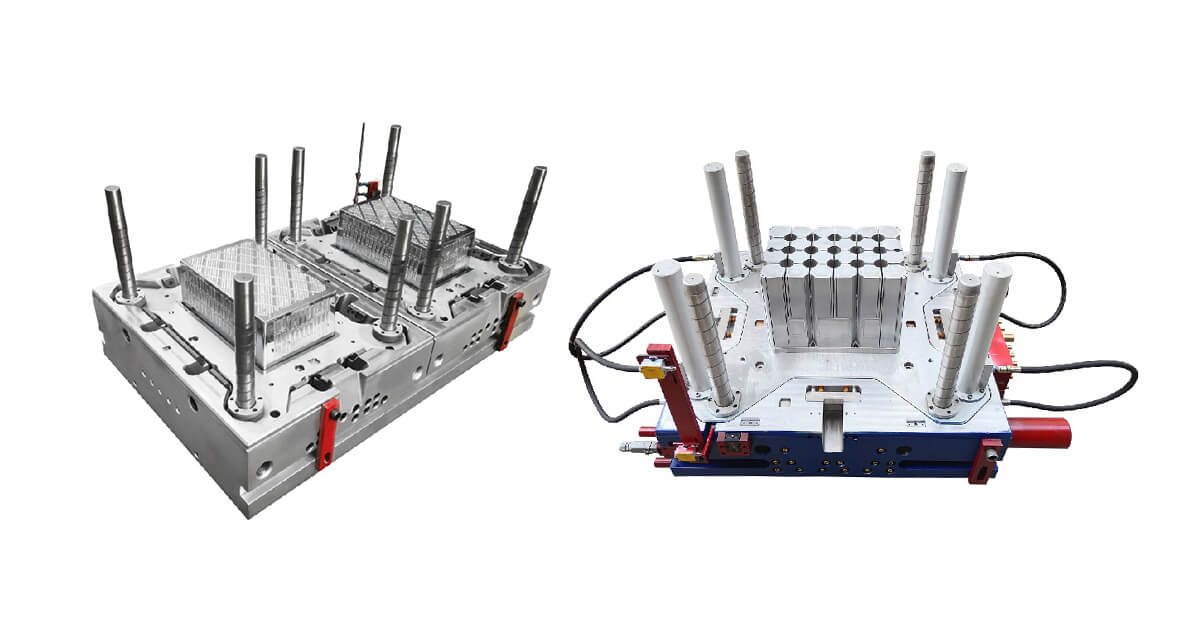

Plastic injection molding is a used manufacturing process that allows its consumers to make intricate and complex plastic parts. This machine consists of a clamping unit, injection system, and tools. The plastic pellets are first cycled in the injection unit and then tightly injected into the mold.
The clamp unit holds the mold in position while the injection unit forces the molten plastic material into the mold cavity to assume the desired shape. When the plastic temperature has come down beyond the molding temperature and the plastic has set, the mold is opened, and the injection molded parts are ejected. The detailed and numerate process can be attributed to the machinery used, such as DKM’s vertical or horizontal injection molding machines. Most of these machines can produce plastic parts of a higher quality and use ecological methods when manufacturing products.
Hydraulic plastic injection molding machines reportedly offer high precision in making plastic parts. Apart from having some of the attributes of any regular injection molding machine, hydraulic injection molding machines have features such as hopper storage for material, a toggle for clamping force, and multiple injection pressure settings that ensure the most efficient production process. These may be application-specific machines for car manufacturing or pilot machines designed to offer minimal energy utilization and as many cycles per hour as possible. Servo-hydraulic technology enables a more varied and effective use and gives engineers more precise control over each operation. Furthermore, the fact that they are small and expandable makes them especially useful for applications requiring high accuracy levels, such as injection molding operations.
Electric injection molding machines have evolved from other injection molding machines for a long time. In contrast to mechanical or hydraulic press machines, electric machines use electrical power, which is cheaper and more effective. These machines typically come in two main types: electrics, including all-electric injection molding machines, and hybrid ones. They are preferable in high-reliability programs where performance is paramount in production. In contrast, hybrid machines use electric and hydraulic approaches to increase productivity in several applications. These machines are generally applied to limited applications like over molding, micro molding, and desktop injection molding.
Another benefit closely connected to automated production is the efficiency of Electric Injection Molding Machines over conventional separation molds, together with a better standard of finished parts. The previously mentioned machines are equipped with servo motors and robotic arms for tasks like handling the runner system removal, part ejection, and mold change. Not only does the degree of looping raise production efficiency to one hundred percent, but it also dramatically decreases the likelihood of flash or defects in the last parts. In addition, the method of all-electric machines gives better accuracy of the surface roughness of the part than hydraulic ones and high accuracy of the geometric dimensions of the part.
These include hybrid injection molding machines, considered the most reliable and efficient for molders. These turnkey systems are complete systems that can give you everything you need to make parts accurately and quickly. Whether you need a horizontal or a vertical injection machine, these machines are employed to produce a range of goods and services. Features such as ton injection capabilities and additional features, including the automatic production cells, make these vertical injection machines suitable for entry-level and professional use.

The first important factor to consider is evidently the production volume and the capacity to which the machine will be submitted. The criteria for selecting a machine are critical since the machine must be able to respond to the production demands.
However, material compatibility is also a primary consideration that should be addressed. Depending on the type of material used, different machines may have various abilities and perform the work efficiently. Therefore, there is always a need to consult and ensure that the particular chosen machine will be able to perform the necessary work on the materials you will use.
Cost and budget are two specific factors that should inform the selection of a plastic injection molding machine. Many factors, such as the initial cost of the machine and the subsequent recurring costs after its purchase, should be set and planned to avoid any depreciation from the initial budget and also to see the amount of value and worthy return that the machine will add to the firm’s operations in the long run.
Another consideration is the size and weight of the specific machine that will need to be integrated into your manufacturing environment and possibly transported.
Apart from that, one can investigate the control system and the machine's Customization. One can conclude that a machine with a complex control system and one that was originally developed to meet the demands of a certain production process will be handy in optimizing the process and the transportation of products within the production line.
Some of the factors that need to be considered while choosing any plastic injection molding machine include the following: The important factors include the production rate, compatibility of the material to be used in molding, cost of the molding machine, size, weight, type of control system, and extent of Customization of the molding machine. Thus, it deserves a reasonable effort to factually evaluate these factors for a better conclusion on choosing the suitable machine for production.
This is how different forms of products manufactured with plastics are developed efficiently and effectively. The use of a specific type of mold is quite instructive, as it influences the indicated factors that determine the outcome of the process. The following types of molds are used in plastic injection molding;
Single cavity molds are one of the most straightforward classifications of molds applied in plastic injection molding. From the name of this type of mold, it is known that it makes only one component per time through the cycle. It is typically slower than other molds but is favored for fewer parts or more significant parts that call for higher accuracy.

On the other hand, multi-cavity molds can create several parts in one cycle. The kind of mold mentioned above is suitable for large-scale production since production time is a critical factor in this method. By creating several parts at once, manufacturers can quickly increase their output, thus decreasing the general cost of production.
Family molds are the other category of mold used in plastic injection molding. These molds are meant for a family of related parts or components intended to be used in a single assembly item. Of course, most manufacturers develop all the parts in one mold to ensure the matching parts will fit the others with little or no flaws.
Hot runner molds have a runner system to supply molten plastic to the cavities. This mold helps organizations produce products faster with less waste in the end product. Although these molds are slightly more costly when purchased and used, they are perfect for large quantities of products.
Before manufacturing a mold for a particular injection molding machine, the following factors must be well understood to allow the highest efficiency in the production line. The material of the mold is stiff and suitable. In its selection, the material should be able to resist high pressure and temperatures used in the injection molding process so as not to warp the shape of the mold or cause any damage to it. The mold's cooling system plays a significant role in ensuring it does not overheat. This overheating might lead to degradation of the quality of the product.
Other factors you need to consider are mold design and complexity. A mold with many small portions to the creation may take longer and more effort to prepare, but it will lead to a better outcome for the mold. The mold design should also consider aspects like the part ejection method, gate position, and the general efficiency of the molding process. Following proper routine maintenance and repair of the mold to enhance its durability and efficiency is also essential. Two methods can be used to reduce the practitioner’s work and prevent wear on the mold; these include regular mold cleaning and greasing parts that are in contact with each other.
Plastic injection molding machines and molds face several challenges nowadays. However, the vital thing to remember is that these machines revolve around doing periodic maintenance and calibration of these machines. Thus, proper maintenance contributes to the increase in the resource lifespan and protects from critical failures. Also, assessing potential mold design defects is essential in maintaining the zero-defect production line. In the case of problems related to gating or venting, failure identification at this stage is beneficial because it prevents considerable losses of time and funds. Another known problem among the injection moldings of plastics is the material and resin used.
Some of the practical ways that the quality of the materials can be enhanced include the following:
Ensuring that the materials used meet certain specifications is vital in preventing problems like warping and cracking. Last but not least, production could vary depending on several factors, from temperature variations to pressure changes. Solving these problems requires checking the hydraulic system and correcting the necessary faults.
Injection molding machines are considered indispensable equipment and practical tools for the industrial manufacturing of various products. However, to get the most out of these machines and molds, optimum practices must be followed to achieve maximum output and mold durability.
Daily and weekly servicing and sanitation of the injection molding machine and molds will go a long way in avoiding breakdowns and poor-quality products. It also notes that handling and storing the material is vital in preventing contamination and molding defects. There is a need to train the employees and adopt measures that will prevent the use of the machines in the wrong way, thereby causing some harm.
To summarize the points under consideration in this article, the following main conclusions can be made: The manufacture of high-quality machines and molds is an essential prerequisite for the effective functioning of future shops in maintaining plastic products through injection molding. Some within this category are hydraulic plastic injection molding machines that enable the production of quality parts in every cycle. This is a perfect example of how the management of every organization must pay for the notion that acquiring quality equipment is most important to sustain a competitive advantage.
High-quality plastic molding machines and molds should be purchased to realize the highest efficiency and effectiveness of the plastic injection molding business. Thus, these machines and molds define the final products' quality and the batch's homogeneity. By employing high-quality equipment, companies can satisfy the highest market requirements.
